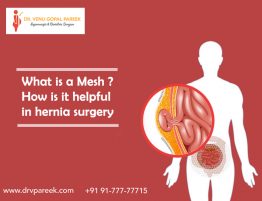
Haemorrhoids, also called piles, are caused by swelling of the blood vessels in or around the anus and rectum. Haemorrhoid veins are located at the bottom of the rectum and anus. Sometimes these blood vessels swell, resulting in thin and stretched walls. This causes severe irritation while passing faecal or bowel movements.
Haemorrhoids are usually caused by high pressure commonly seen in pregnancy, obesity, or strained bowel movements. In middle age, haemorrhoids are often a constant complaint. By age 50, about half of the population has one or more classic symptoms, including rectal pain, itching, bleeding, and possible prolapse (haemorrhoids that leak through the anal canal). Although rarely dangerous, haemorrhoids can be recurring and painful. Fortunately, there are many things we can do to treat haemorrhoids.
Let us see this blog provided by Dr Venu Gopal Pareek gives information about Painless Piles Treatment in Hyderabad for Your External or Internal Piles.
Know more about Haemorrhoids?

Haemorrhoids (or piles) are pillow-like clusters of blood vessels that lie just below the mucous membrane that lines the bottom of the rectum and anus. The veins swell and become enlarged, like varicose veins in the legs.
Haemorrhoids fall into two general categories: Internal and External.
Internal haemorrhoids: These are in the rectum and are challenging to see with the naked eye or to feel with the hands. They are usually painless because the rectum contains nerves that are less sensitive to pain. Bleeding may be the only sign. Sometimes internal haemorrhoids multiply or become enlarged and protruding outside the anal sphincter. In this case, you can see from the outside or felt with the hand as a cushion of moist, pink skin that is more pinkish than the other. Prolapsed haemorrhoids can be painful due to irritation from rubbing clothes and sitting. They usually recede into the rectum; can even push it back quickly.
External haemorrhoids are located in the anus and are often uncomfortable. If the prolapse of external haemorrhoids occurs outside (usually during a bowel movement), it can be seen or felt. When external haemorrhoids occur, blood clots sometimes form, causing a severe condition called thrombosis. When an external haemorrhoid is thrombosed, it can look terrifying, turn purple or blue, and eventually bleed. Regardless of their appearance, thrombosed haemorrhoids are usually not severe and go away in about a week. If the pain is unbearable, the thrombosed haemorrhoid can be removed surgically, which will stop the pain.
Causes of Haemorrhoids

Haemorrhoids are more common in older people and during pregnancy. The possibility of extreme abdominal pressure causes the blood vessels to swell and is prone to irritation. Such stress can be caused by obesity, pregnancy, standing or sitting for long periods, fatigue or sitting for long periods when passing stools, coughing, sneezing, vomiting, and holding your breath when exerting yourself through physical work and poor posture.
Diet plays a vital role in haemorrhoids. People who eat high-fibre foods regularly tend to be less likely to develop haemorrhoids, but those who prefer foods high in processed foods are at a higher risk of developing haemorrhoids. A low-fibre diet or inadequate fluid intake can lead to constipation, which can cause haemorrhoids in two ways: increasing the tension in the toilet, and worsening the haemorrhoids by creating hard stools that further irritate the swollen blood vessels.
Symptoms of Haemorrhoids

Internal haemorrhoids are divided into four levels:
- Grade 1 haemorrhoids are small sores that are usually painless and remain in the lining of the anus. They are invisible. Sometimes, occasional bleeding can occur after a bowel movement.
- In grade 2 haemorrhoids, the swelling is greater than that of grade 1 haemorrhoids, but also in the anus. When passing stools, they can be pushed out but will spontaneously return to their places without 0assistance.
- Third-grade haemorrhoids are often referred to as “prolapsed haemorrhoids.” They appear outside the anus. The patient can feel it hanging. They should be pushed in by using your fingers.
- Grade 4 haemorrhoids – they keep protruded out and falling back down when pushed back into the rectum. Bleeding may or may not occur. Prolapsed haemorrhoids can be painful when strangled from the anus or when clots form. They are large and remain outside the anus at all times.
The internal piles are usually painless. There may be a vague feeling of discomfort. As the pile prolapse, the discomfort increases; Bright red rectal bleeding can occur during or after a bowel movement. There may be mucus and itching in the anus.
External piles often cause itching, stinging, and can cause bleeding. They are bluish masses of erupted veins with severe pain and anal cramps. This is a small lump located on the outer edge of the anus. They are very itchy and painful if a blood clot (thrombosed external haemorrhoid) forms inside.
Painless Piles Treatment in Hyderabad for Your External or Internal Piles – Dr V Pareek
For external haemorrhoids, you can immediately get help from a doctor by performing a Haemorrhoid Thrombectomy. This is a simple “incision and drainage” procedure to remove a blood clot.
Some haemorrhoids are treated surgically to remove or reduce the size of the haemorrhoids. Hemorrhoidectomy is a permanent surgical removal of haemorrhoids. If the bleeding continues or the haemorrhoids are painful, the following non-surgical procedures can be done to destroy the haemorrhoids in the hospital:
Banding treatment:

Banding is the most common procedure, especially for grade 2 piles. Banding can also be used to treat grade 1 piles which are not satisfied with the simple advice and maintenance.
A surgeon in the hospital usually performs this procedure. Haemorrhoids are removed by a surgeon with forceps or a vacuum. A rubber band is then placed at the base of the haemorrhoid. This cuts off the blood supply to the haemorrhoids, which then die and disappear after a few days. The tissue at the base of haemorrhoid heals with multiple scars.
Banding an internal pile is usually painless because the haemorrhoid base is over the anal canal at the last part of the intestine, where the intestine’s lining is not sensitive to pain.
Injectable sclerotherapy
The phenol in oil is injected into the tissue at the base of the pile. This causes a scar (fibrous) reaction that clears the blood vessels leading to the pile. The pile then dies and falls off, as after banding.
Diathermy and electrotherapy

It uses heat energy to destroy the pile. They appear to have a similar success rate to
infrared coagulation and a low risk of complications.
- Infrared photocoagulation. The doctor uses a device that directs infrared rays at internal haemorrhoids. The heat generated by infrared rays causes scars to form, interferes with the blood supply, and often shrinks haemorrhoids.
- Electrocoagulation. The doctor uses a device that sends an electric current into the internal haemorrhoid. The electric current causes scars to form, which cuts off the blood supply and often shrinks haemorrhoids.
What are the surgical options?
If non-surgical procedures are unsuccessful or if the haemorrhoids are enormous, one of the following surgical procedures may be required:
Hemorrhoidectomy (traditional surgery)
Hemorrhoidectomy surgery is an option for treating grade 3 or 4 piles which have not been successfully treated with banding or other methods. The operation is performed under general anaesthesia and is usually successful. However, it can be very painful in the days after surgery.
Stapled hemorrhoidectomy (MIPH Surgery)

The round part of the lining of the anus (anal canal) is cut above the piles with a circular stapling gun. This pulls the piles back down the back passage. It also has the effect of reducing the blood supply to the piles, causing it to shrink. Because the cut is done on top of the piles, it is usually less painful than traditional pile removing operations.
Haemorrhoid ligation of arteries
The small arteries that supply blood to the piles are tied up. This causes the haemorrhoids to shrink.
Conclusion:
External haemorrhoids usually go away on their own. Reducing constipation and avoiding straining of bowel movements reduces the chances of developing haemorrhoids. Anyone suffering from extremely painful external haemorrhoids should see their doctor for the recommended treatment.
Internal haemorrhoids may go undetected at first, but they can get worse and cause problems. This may require long term solutions to the problem. If you want to get rid of your internal and external haemorrhoids effectively, meet Dr Venugopal Pareek, who offers the best painless piles treatment in Hyderabad for External or Internal Piles. Contact Dr Venugopal Pareek at 091777 77715 and book your appointment.







